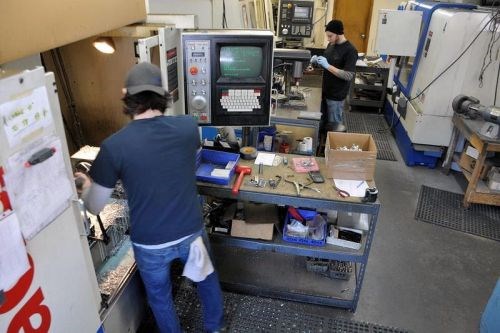Comparing Apples to Apples
Consistency is key to properly evaluating the effect of any process change.
Share







George Smith, president of EGW, says he is confident in his comparisons of the SGS’ Z-Carb mills and the previously used tool is because both ran for an extended period of time in the same conditions on the same machine: the Fadal VMC visible here.
Product literature abounds with claims about reducing cycle time or improving productivity by such-and-such percent. Assuming the supplier is reputable, such data aren’t conjured from thin air; they’re the result of extensive testing. And any proper testing will apply a principle that we all (should have) learned in science class: it’s imperative to keep all process variables constant except the one being evaluated.
That’s worth keeping in mind when evaluating a new product on your own shop floor. Consider this case study, which details the benefits firearm component manufacturer Evolution Gun Works (EGW) gleaned from a new end mill. The reason company founder George Smith can be so confident in the capabilities of the new tool boils down to process consistency. As Mr. Smith puts it, “We have a good gauge on end mills because we’ve been running the same job on the same machine with the same material for four months straight.”
Related Content
-
Custom Workholding Principles to Live By
Workholding solutions can take on infinite forms and all would be correct to some degree. Follow these tips to help optimize custom workholding solutions.
-
Briquetting Manufacturer Tools Up for Faster Turnaround Times
To cut out laborious manual processes like hand-grinding, this briquette manufacturer revamped its machining and cutting tool arsenal for faster production.
-
How to Mitigate Chatter to Boost Machining Rates
There are usually better solutions to chatter than just reducing the feed rate. Through vibration analysis, the chatter problem can be solved, enabling much higher metal removal rates, better quality and longer tool life.












